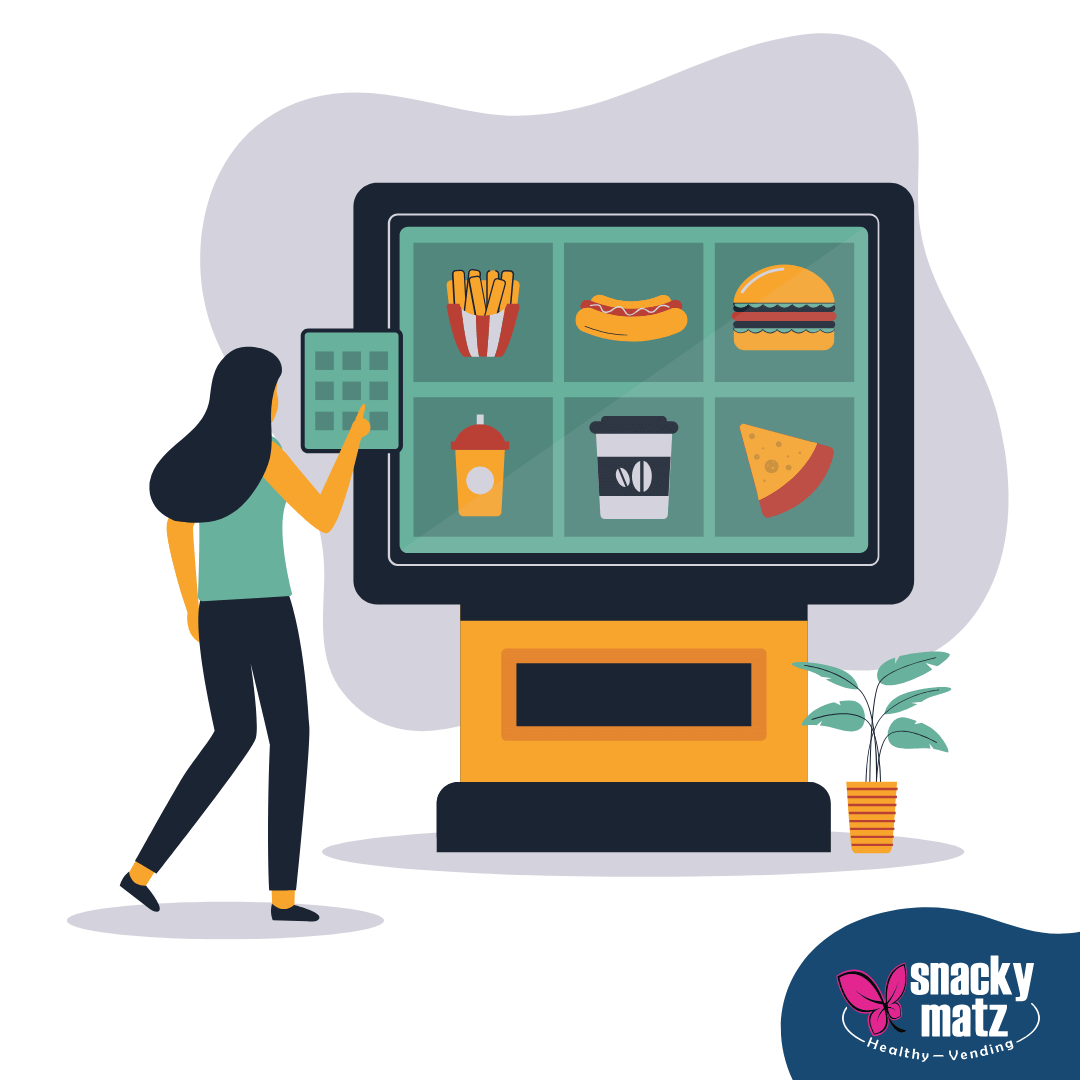
The retail industry is undergoing a radical transformation fueled by advances in automation technology, significantly reshaping how consumers interact with everyday shopping experiences. Self-service supermarkets and advanced vending machines are at the forefront of this evolution, providing consumers unprecedented convenience and efficiency.
According to Forbes, self-checkout solutions are rapidly expanding, with annual global installations predicted to grow by nearly 90%. This growth stems from various factors, including increasing labor shortages, rising operational costs, and consumer preference for faster and more independent shopping experiences. Retail giants such as Amazon with their cashier-less Amazon Go stores have set new expectations, demonstrating the viability and consumer acceptance of fully automated markets.
Parallel to this trend, modern vending machines have emerged as significant players in the automated retail sector. Once primarily used for dispensing snacks and beverages, today’s smart vending machines offer a wide range of products, from fresh meals to electronics, hygiene products, and even clothing items.
These smart vending machines incorporate advanced technologies such as touchscreen interfaces, cashless payments, and AI-powered inventory management systems. Consumers now enjoy more intuitive, personalized shopping experiences, as these machines track popular items, optimize stock levels, and even suggest products based on consumer behavior patterns.
Together, automated supermarkets and high-tech vending machines symbolize a broader movement towards convenience-centric retail solutions. As consumer expectations evolve, businesses adopting these innovations stand to gain significant advantages in efficiency, customer satisfaction, and market competitiveness.
This convergence represents more than just a technological shift—it signifies a new retail paradigm that prioritizes consumer autonomy, convenience, and personalized experiences.
The Emergence of Self-Service Supermarkets
Self-service supermarkets, also known as cashier-less stores, are quickly becoming the new standard in retail convenience. These innovative stores remove the traditional checkout process entirely, allowing customers to simply pick up items and leave, with purchases automatically charged through smartphone apps or linked accounts.
One of the most recognizable examples of this retail evolution is Amazon Go. Launched in 2018, Amazon Go stores utilize a combination of AI, computer vision, and sensor fusion technologies to create a seamless shopping experience. Shoppers enter by scanning a QR code in the Amazon app, select their products, and then exit without waiting in line or interacting with a cashier. The items are automatically billed to their Amazon account. This frictionless process significantly reduces wait times and enhances customer satisfaction.
The benefits of these automated supermarkets extend beyond just convenience for the customer. Retailers also reap substantial operational advantages, including significant cost savings on labor and reduced overhead associated with traditional checkout infrastructures. By automating the checkout process, supermarkets can optimize staffing, focusing employees instead on improving customer service, restocking shelves, or managing store logistics.
As self-service supermarket models become more widespread, consumer acceptance is rapidly growing. Initially driven by younger, tech-savvy demographics, the convenience of cashier-less shopping is increasingly appealing across broader consumer segments, further accelerating its adoption across the retail landsc
Technological Innovations Powering Self-Service Markets
Several advanced technologies are driving the rapid adoption and success of self-service markets. Artificial intelligence (AI), the Internet of Things (IoT), mobile applications, and computer vision systems are among the key technologies revolutionizing retail automation.
AI and machine learning algorithms analyze consumer behavior, helping stores optimize their inventory management and product placement. IoT technologies, integrated with smart shelving and sensors, facilitate real-time tracking of product availability and consumer interactions. Mobile apps enable seamless integration of digital payments and personalized promotions, enhancing the consumer experience.
Computer vision, which involves sophisticated camera systems and sensors, accurately identifies products chosen by consumers and automatically updates their digital shopping carts. Retailers such as Walmart and Tesco are implementing these technologies to optimize checkout processes and improve overall operational efficiency.
These technological advancements are not only making the consumer experience faster and more intuitive but are also allowing retailers to gather valuable insights into consumer preferences, enabling highly targeted marketing strategies and more efficient store operations. Walmart, for instance, has extensively adopted AI-driven technology to enhance efficiency, reflecting a broader trend toward automated solutions across the retail industry. As technology continues to advance, the retail sector can expect further innovative solutions that promise even greater convenience and personalization.
Benefits for Consumers and Businesses
One of the most powerful drivers behind the smart shopping revolution is the clear and tangible benefit it offers to both consumers and businesses. For consumers, the shift to automation means more than just convenience—it’s about gaining control over their shopping experience. From faster checkout times to greater product accessibility, automated retail is aligning itself with the needs of a population that values speed, personalization, and autonomy.
For the modern consumer, time is currency. Self-service supermarkets and vending machines eliminate the need to wait in lines or rely on staff availability, enabling a frictionless experience that supports on-the-go lifestyles. Smart vending machines can now be found in office buildings, gyms, airports, schools, and residential complexes—places that reflect the shift toward micro-moment consumption, where purchases happen when and where they’re most needed.
These systems also foster inclusivity and accessibility. For people with social anxiety or hearing impairments, interacting with a fully automated machine can be more comfortable than a traditional checkout process. In rural or underserved areas, strategically placed smart machines or compact automated markets can expand access to essential goods where traditional stores may not operate.
From the business perspective, the advantages are just as compelling. With labor costs on the rise and staffing challenges impacting retail performance, automation delivers consistency and efficiency. Smart systems also generate large volumes of real-time data on consumer behavior, purchasing trends, and product performance—insights that can be used to refine inventory, plan marketing campaigns, and even forecast future demand.
Automation doesn’t replace customer service—it reallocates it. Businesses can deploy human resources where they matter most: in customer support, product development, and service optimization. The net result is a leaner, smarter operation that’s more responsive to the expectations of today’s consumer.
Smart shopping doesn’t just benefit the user—it transforms the business model behind how products are distributed and experienced. And in doing so, it opens the door to new forms of engagement, customer loyalty, and profitability.
Challenges and Considerations
While the shift toward self-service and automated retail presents numerous benefits, it also introduces new layers of complexity and responsibility for businesses. One of the most pressing concerns is data privacy and cybersecurity. As these technologies collect and analyze vast amounts of consumer data to deliver personalized experiences, they become targets for cyberattacks. Companies must ensure compliance with data protection regulations like GDPR and CCPA, and invest in secure systems that protect user information.
Another major challenge is consumer adaptation. While younger generations may embrace automated stores and AI-powered machines, older customers or those unfamiliar with new technologies may feel excluded or frustrated. To bridge this gap, businesses must offer alternative interfaces, clear instructions, and hybrid models that include minimal staff support or digital help systems.
There’s also the issue of technical reliability. Glitches in software, malfunctioning vending machines, or mischarged items can lead to consumer dissatisfaction and damage trust in the brand. As automation scales, ensuring uptime and responsive maintenance becomes not just a technical requirement, but a cornerstone of customer experience.
In addition, ethical considerations arise around job displacement. As retailers increasingly automate tasks once performed by humans, questions surface about the social responsibility of companies. The transition to automation must be balanced with upskilling initiatives, job reassignments, and a transparent communication strategy that involves employees in the evolution of the workplace.
The Future Outlook of Automated Retail
Looking ahead, the trajectory of automated retail is both expansive and promising. Innovations such as AI-powered micro-fulfillment centers, autonomous delivery bots, and fully automated pop-up shops are already in testing or limited use across markets. Retailers are no longer asking if they should adopt automation, but how quickly they can do it to remain competitive.
We can also expect deeper integration between automated retail and mobile ecosystems, where personalized offers, AR-based product previews, and real-time inventory access become the norm. For instance, China’s Suning.com and JD.com are already experimenting with facial recognition payments and cashier-free convenience stores, paving the way for widespread adoption.
From a consumer perspective, demand will continue to favor frictionless, flexible, and intelligent shopping experiences. Whether it’s a 24/7 smart fridge in a residential lobby or a vending machine that adapts its inventory based on weather data and time of day, the future belongs to businesses that can anticipate needs and deliver value instantly.
Conclusion
The rise of self-service supermarkets and intelligent vending machines marks more than a technological trend—it reflects a fundamental shift in how we consume. Automation, when implemented thoughtfully, not only enhances convenience but also empowers consumers with choice, autonomy, and smarter experiences.
For businesses, this shift offers a new framework for growth. It provides actionable data, operational efficiencies, and innovative engagement strategies. Yet, it also demands responsibility in areas such as privacy, inclusion, and social impact.
As we look to the future, one thing is clear: the smartest retail experiences will be the ones that blend cutting-edge automation with a human-centric approach. Vending machines and self-service systems aren’t just filling gaps—they’re redesigning the entire shopping journey.


